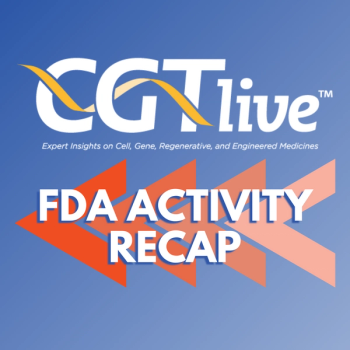
Omidubicel Shows Efficacy Over Standard Umbilical Cord Blood Transplant in Hematologic Malignancies
Patients receiving omidubicel also spent less time in hospital following transplant.
The median time to neutrophil engraftment—the primary end point of the study—was 12 days (95% CI, 10-14) in the omidubicel arm compared with 22 days (95% CI, 19-25) in the control arm (P <.001). In addition, patients treated with omidubicel had a 55% platelet recovery by 42 days post-transplant compared with a 35% recovery in the placebo group (P = .028).
“We are pleased that the data from this well-conducted international Phase 3 trial have been published in Blood, the highly respected, peer-reviewed journal of the American Society of Hematology,” said Ronit Simantov, MD, chief medical officer, Gamida Cell.2 “The robust results of this clinical trial have demonstrated that omidubicel could provide an important new option for patients with hematologic malignancies in need of a bone marrow transplant.”
Investigators analyzed data from 125 patients (median age, 41) with acute lymphoblastic leukemia, acute myelogenous leukemia, chronic myelogenous leukemia, myelodysplastic syndrome, or lymphoma who were randomly assigned to omidubicel or standard UCBT between January 2017 and January 2020. All patients received myeloablative conditioning and graft versus host disease (GvHD) prophylaxis with a calcineurin inhibitor and mycophenolate mofetil. In addition to superior neutrophil and platelet recovery, patients who received omidubicel also had a 37% incidence of first grade 2/3 bacterial or invasive fungal infections compared with 57% in the placebo group (P = .027), and spent a median of 61 days out of the hospital in the first 100 days following transplant compared with 48 days in the placebo group (P = .005). There were no statistically significant differences in GvHD and survival between the 2 arms.
READ MORE:
Further analysis revealed that patients receiving omidubicel had half the risk of grade 2 and 3 infections compared with those who received standard UCBT (risk ratio, 0.5; P <.001). No statistically significant differences were observed in incidence of grade 3/4 acute GvHD between omidubicel (14%) and control (21%) arms or incidence of all grades of chronic GvHD at 1 year (omidubicel, 35%; control, 29%). Non-relapse mortality was 11% among those in the omidubicel group versus 24% for those in the control group (P = .09).
“Previous studies have shown that engraftment with omidubicel is durable, with some patients in the Phase 1/2 study now a decade past their transplant. The Phase 3 data reinforce omidubicel’s potential to be a new standard of care for patients who are in need of stem cell transplantation but do not have access to an appropriate matched donor,” said Mitchell Horwitz, MD, lead author of the paper and a professor of medicine at the Duke Cancer Institute.2
Based on these data, Gamida Cell intends to submit a Biologics License Application to the FDA in the fourth quarter of 2021.
In an interview with GeneTherapyLive,
REFERENCES
1. Horwitz ME, Stiff PJ, Cutler CS, et al. Omidubicel versus standard myeloablative umbilical cord blood transplantation: Results of a phase III randomized study. Blood. Published online June 22, 2021. doi: 10.1182/blood.2021011719
2. Gamida Cell announces publication in Blood, the journal of the American Society of Hematology, of the first pivotal trial to evaluate a cell therapy (omidubicel) for patients with blood cancer who require an allogeneic stem cell transplant. News release. Gamida Cell. June 23, 2021. https://www.businesswire.com/news/home/20210623005336/en/Gamida-Cell-Announces-Publication-in-Blood-the-Journal-of-the-American-Society-of-Hematology-of-the-First-Pivotal-Trial-to-Evaluate-a-Cell-Therapy-Omidubicel-for-Patients-with-Blood-Cancer-who-Require-an-Allogeneic-Stem-Cell-Transplant
Newsletter
Stay at the forefront of cutting-edge science with CGT—your direct line to expert insights, breakthrough data, and real-time coverage of the latest advancements in cell and gene therapy.

























